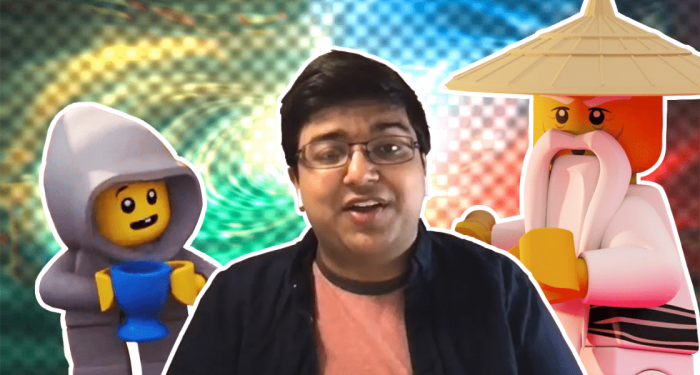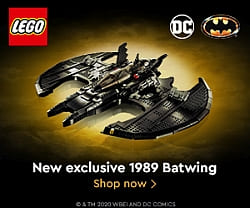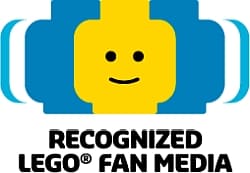Wanderlusters prepare to be enthralled by the magic of a different sort of map; the huge new #31203 LEGO Art World Map! This new addition to the LEGO Art collection contains the most pieces ever included in a set in the LEGO Group’s history. With its 11,695 elements, the set allows builders to immerse themselves in creating a stunning representation of the Earth from 2D LEGO tiles.
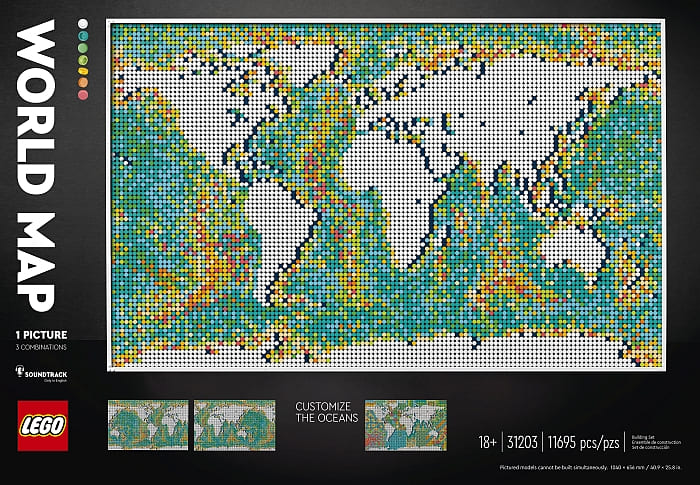
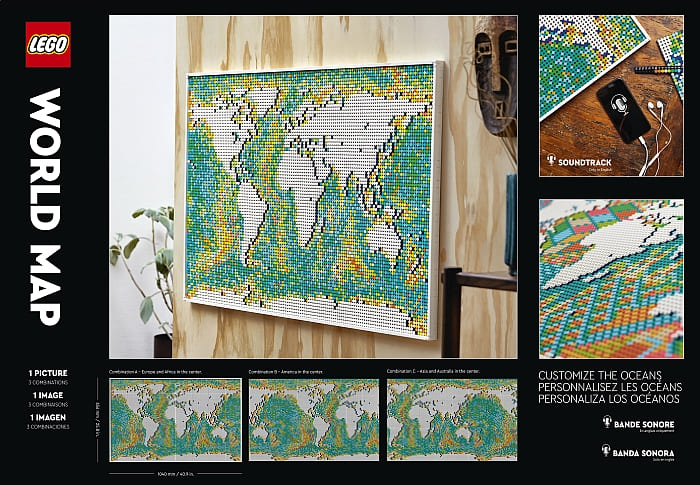
The new #31203 LEGO Art World Map can be reimagined in a number of different ways to express the personality and travel memories or wishes of different builders. Customizable brick-built pins can be placed to mark out destinations already visited or highlight those still on the builder’s bucket list to give this masterpiece a personal twist before it’s proudly displayed.

The set’s building instructions show how the 40 interconnecting base plates are divided into three sections for the build that can be arranged in one of three different ways. Allowing you to place your favorite part of the world in the center of your map.

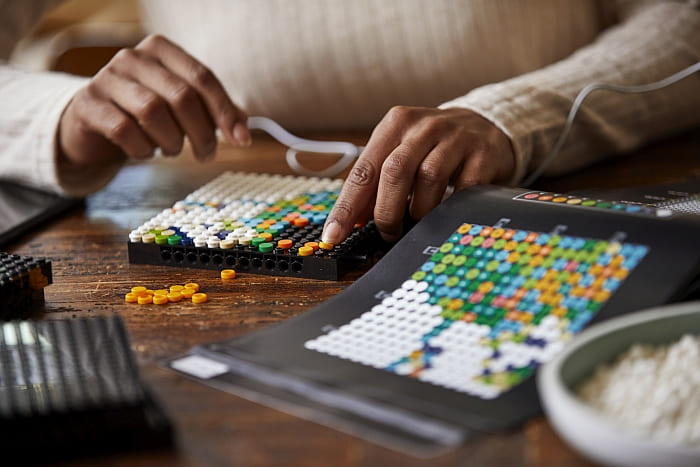
The oceans on this 25.5 in. (65cm) high and 40.5 in. (104 cm) wide masterpiece can also be tailored to be a true expression of each builder’s style: the tiles can be arranged in a manner inspired by bathymetric mapping of the ocean floor by following the building instructions, or builders can express themselves more freely and creatively by arranging the tiles as they wish and exploring different patterns and motifs instead.
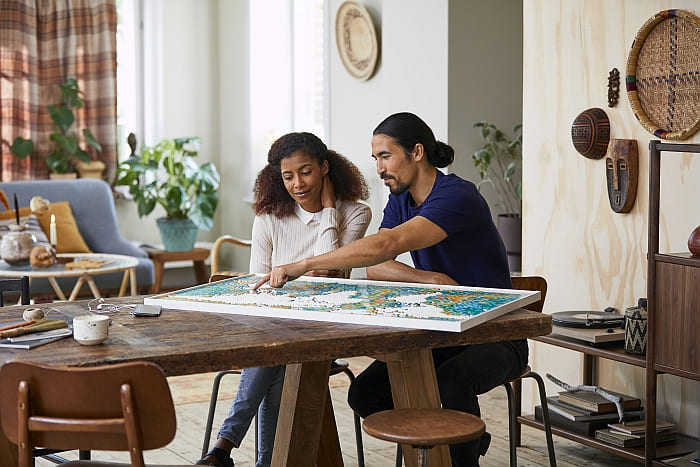
This new LEGO Art set offers adults and their families a challenging and immersive building experience to help them relax and recharge as they reminisce about holiday memories of the past or start planning future excursions. An accompanying soundtrack featuring stories from travel experts has been curated to immerse listeners in their passion for exploration as they build. The soundtrack features travelers’ tales from bloggers and adventurers, including Syazwani Baumgartner from the “Travel Muse Family” blog who shares her experience of visiting one of the most remote villages in the world, and Torbjørn C. Pedersen who was the first person in history to visit every country in one unbroken journey without flying. Also featured are Dane & Stacey, a New Zealand couple who run a travel YouTube channel called “Daneger & Stacey”, and speak about a trip to the Cook Islands. Additional contributors are Ernest White II who is an American travel TV producer and host, and LEGO designer and travel lover Fiorella Groves.
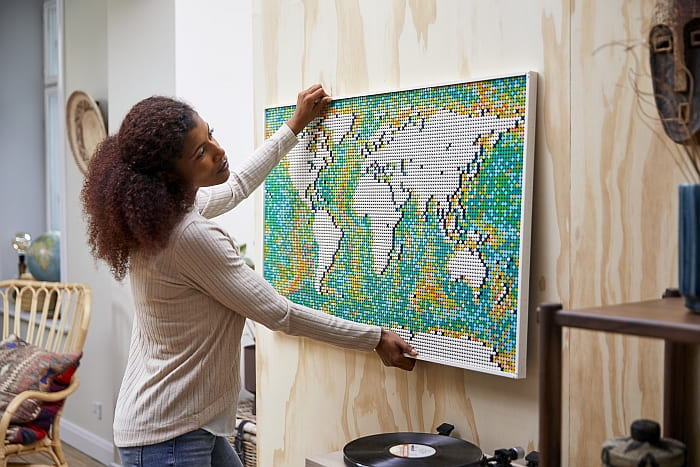
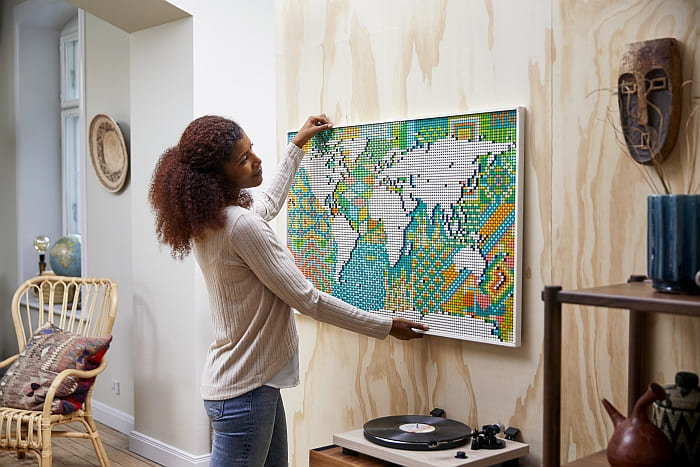
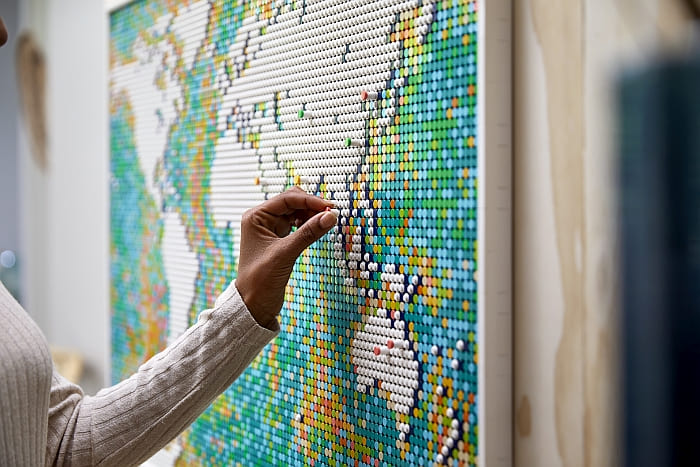
The new set comes with a coffee-table style instruction booklet, a white brick-built frame and two hanging elements to make the map easy to display, take down, and rebuild whenever the mood strikes.
Fiorella Groves, Creative Lead for LEGO Art, commented: “We know that our adult fans love to travel, but many haven’t been able to do so for over a year now. We thought that there was no better way of helping explore the world while relaxing in the comfort of their home than by allowing them to build, rebuild, plan, and reminisce through building. We hope that the LEGO Art World Map will inspire new adventures in some, and help others relive and celebrate wonderful travel memories from the past.”
The #31203 LEGO Art World Map will be available from official LEGO stores and the Online LEGO Shop globally from the 1st June, and will become available from other retailers from the 1st of August. Prices are as follows: EUR 249.99/$249.99/229.99 GBP/399.99 AUD/349.99 CAD. For more information and to purchase the set, visit the LEGO Art section of the Online LEGO Shop.
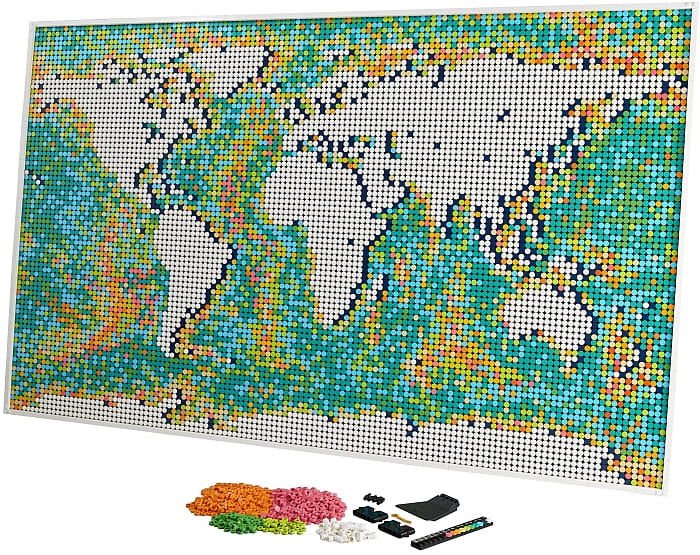
The LEGO Art series has been popular with adult LEGO fans, and even adults who normally don’t build/play with LEGO. The sets are beautifully designed, decorative, and provide a relaxing building experience. The #31203 LEGO Art World Map is the seventh set in the collection. If you would like to check out the other sets while waiting for the release of the LEGO Art World Map, visit the LEGO Art section of the Online LEGO Shop.
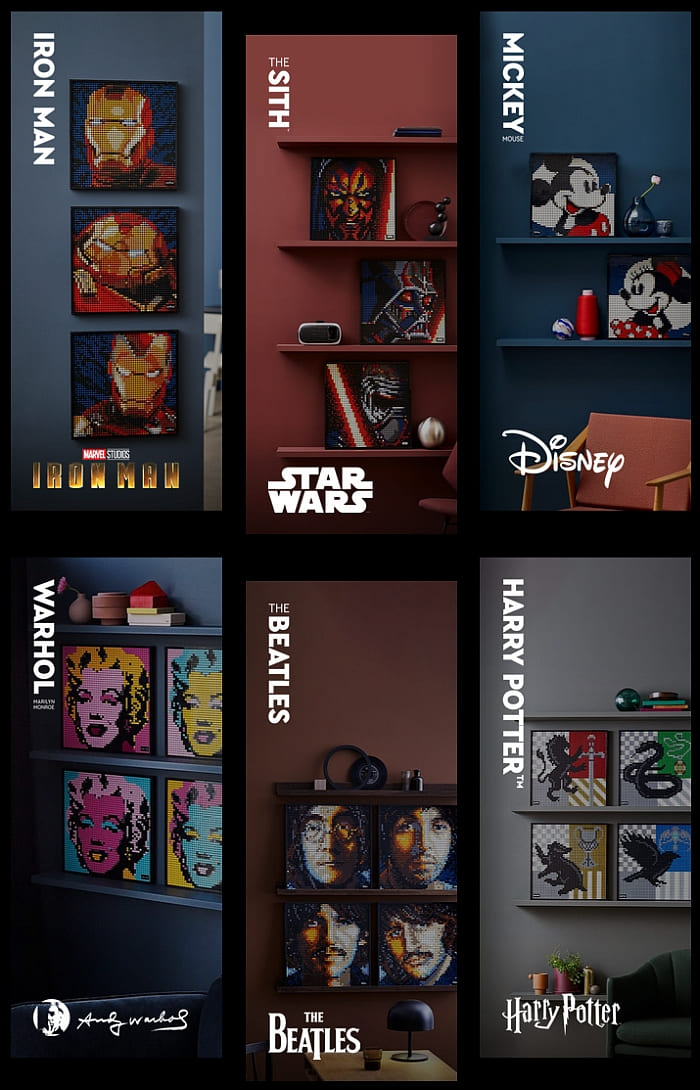

What do you think? How do you like the LEGO Art World Map? What do you think of the design and the interactive features? Are you planning to get this set? How would you use it? Feel free to share your thoughts and discuss in the comment section below!
And you might also like to check out the following related posts:



